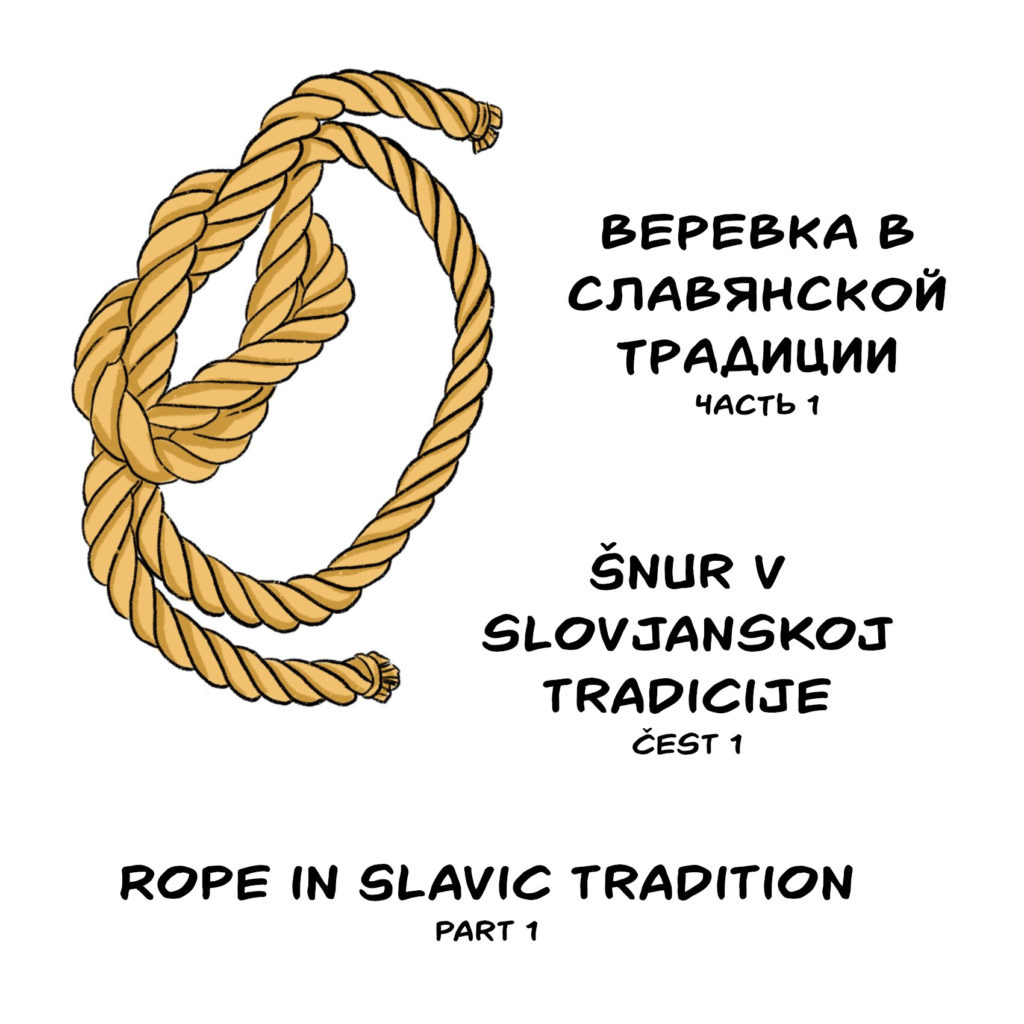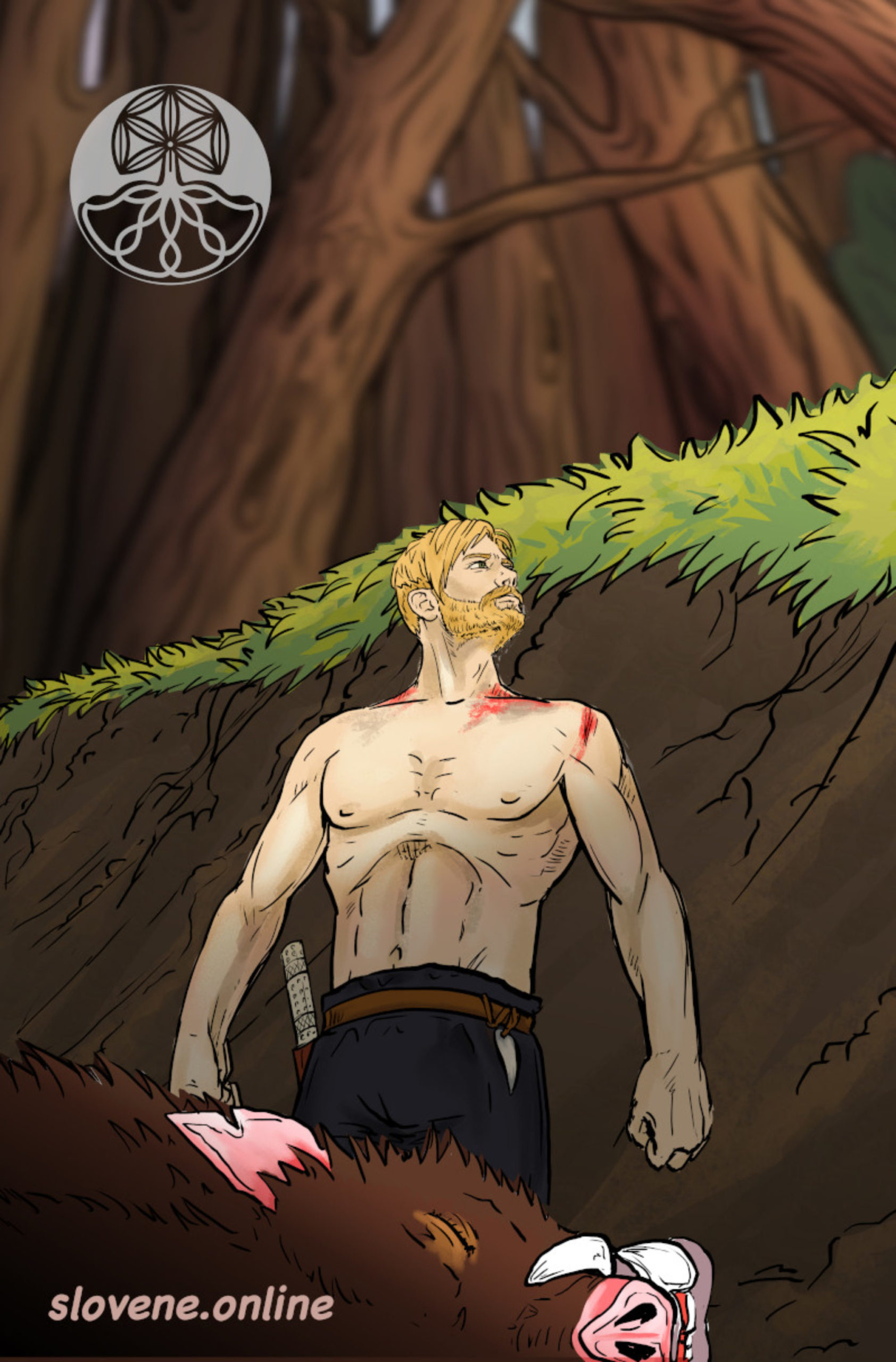Lapti (bast shoes) and evil spirits.
ꏍ
Bast shoes are often mentioned in connection to mythological creatures. Leshy and Polevik (field spirit) are often portrayed wearing lapti. Weaving bast shoes is a favorite activity of evil characters, and Vodyanoi in particular.
ꏍ
Bast shoes were also used to appease evil spirits. Vologda fishermen and millers threw bast shoes into the water to get help from Vodyanoi. If the cattle were lost, the peasants of the Smolensk region appealed to Rusalki. They went to the forest and brought with them bast shoes, footcloth, bread & salt and left it in a sack on a tree with the words: “Please, Rusalki, accept my gift, and return the cattle!”. In the Kostroma region, when moving to a new house, the owners went to the old yard with one bast shoe and invited Domovoy to go with them in that shoe. In the Vladimir region, people supplied Domovoy with shoes, by hanging old worn “little lapti” in the yard.
ꏍ
The need for shoes for Domovoy is understandable. But what would Rusalki do with them? 😉
ꏍ
More interesting facts can be found in: “Slavic Antiquities” – encyclopedic dictionary in 5 volumes by Institute for Slavic Studies of the Russian Academy of Sciences.
ꏍ

Lapti as a talisman
Lapti (bast shoes) were used in magical practice as a talisman. The Russians hung out old bast shoes near the barnyard, in front of the house, or at the gate. This was done in order to protect the house and livestock from the evil eye: anyone who came will first look at the pile of bast shoes and “break his eyes” at them, therefore, will lose the opportunity to inflict damage. These rituals can also be viewed as a sacrifice of shoes to deceased ancestors, who, according to Slavic beliefs, periodically visit their native places and need shoes for their travels.
ꏍ
Leaky bast shoes could serve as the amulet called the “Chicken God” (see our previous posts). Old and leaky bast shoes also served as a talisman in family rituals. To prevent the baby from crying at night, a bast shoe was placed at the head of the crib with the words: “Let the child be silent as this bast shoe”.
ꏍ
Lapti were also used in fertility stimulating rituals. For example, when planting cabbage, old bast shoes were buried at the end of each row so that the cabbage heads were large and dense. And in the Vologda region, a calving cow was fumigated from the owner’s right bast shoe.
ꏍ
What do you think they did with the remaining bast shoe from the owner’s left foot? 😉
ꏍ
To be continued…
ꏍ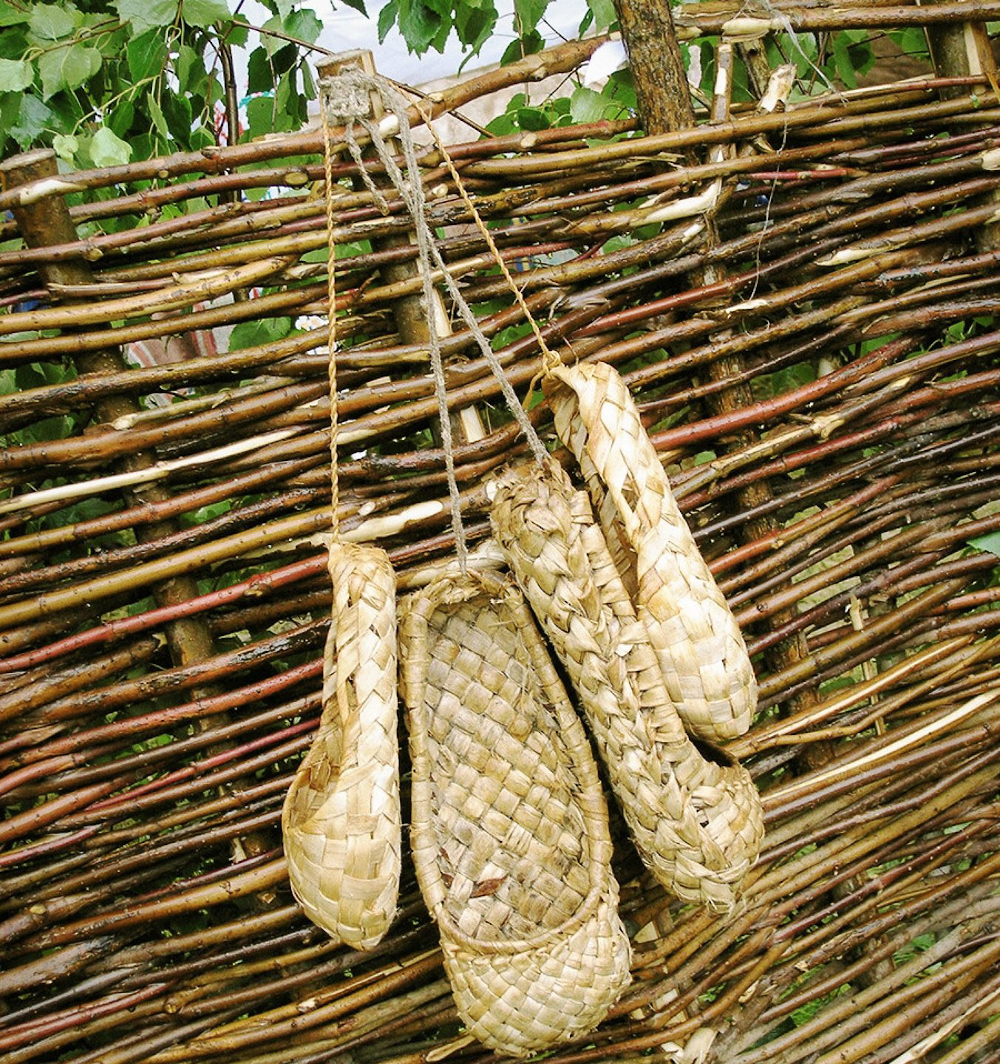
Slavic bast shoes – Lapti
Bast shoes (lapti) were known mainly among the Eastern Slavs. They have been used in a variety of ceremonies and rituals. Water from bast shoes was given to a woman in labor to facilitate childbirth. Before the wedding in the southern Russian regions, the groom personally wove holiday bast shoes for his chosen one. Bast shoes could be a wedding gift to the bride or a gift to a girl in matchmaking (if she accepted them, this was a sign of agreement).
ꏍ
Bast shoes woven in a special way were put on the dead. Slavs believed that these shoes protect from evil spirits and prevent deceased from turning into a vampire. Even when Slavs no longer wore bast shoes in everyday life, they still preferred to put them on the deceased, instead of boots – because boots had “a lot of iron”, which would make it hard for a deceased to walk in the “other world”.
ꏍ
Ukrainians and Belarusians destroyed old bast shoes in Kupala bonfires along with other old utensils. And in the Bryansk region, on Kupala night, people hung bast shoes on a high pole and burned the entire structure while singing Kupala songs.
ꏍ
Do you see bast shoes are being used in our time anywhere outside of the museums?
ꏍ
To be continued…
ꏍ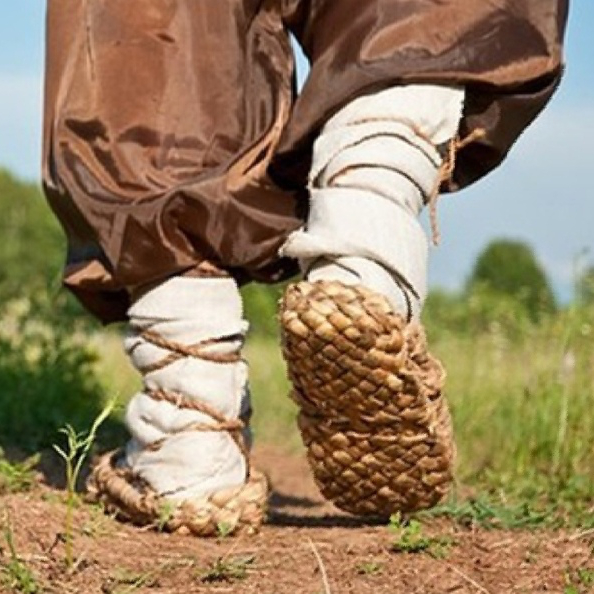
Rope in Slavic tradition – part 2
You may have seen a wedding ceremony tradition, where people are putting a rope across the road before the newlyweds who are coming back from the wedding. This is an ancient Russian custom for protection against curses. The same method (pulling a rope across the road) was practiced by the Eastern Slavs to protect cattle from witches.
ꏍ
But the witches used the rope to mend evil as well. For example, to curse the cattle they also pulled it across the road, along which a herd of cows should pass on St. George’s Day or on Kupala. Eastern and Western Slavs believed that in order to “steal” milk from cows, the witch collected night dew with a rope, and then milk was dripping from that rope. In the beliefs of the Ukrainians, the Luzhichians and the Southern Slavs, the witch, for the same purpose, “milked” a rope (or belt) thrown over the ceiling beam – and milk was believed to be dripping from it.
ꏍ
In Kostroma, a rope that was in contact with the deceased was of great magical significance. Such a rope was used as a belt by a witch who would set off on the Kupala night to “steal the harvest” from other people’s fields.
ꏍ
More interesting facts can be found in: “Slavic Antiquities” – encyclopedic dictionary in 5 volumes by Institute for Slavic Studies of the Russian Academy of Sciences.
ꏍ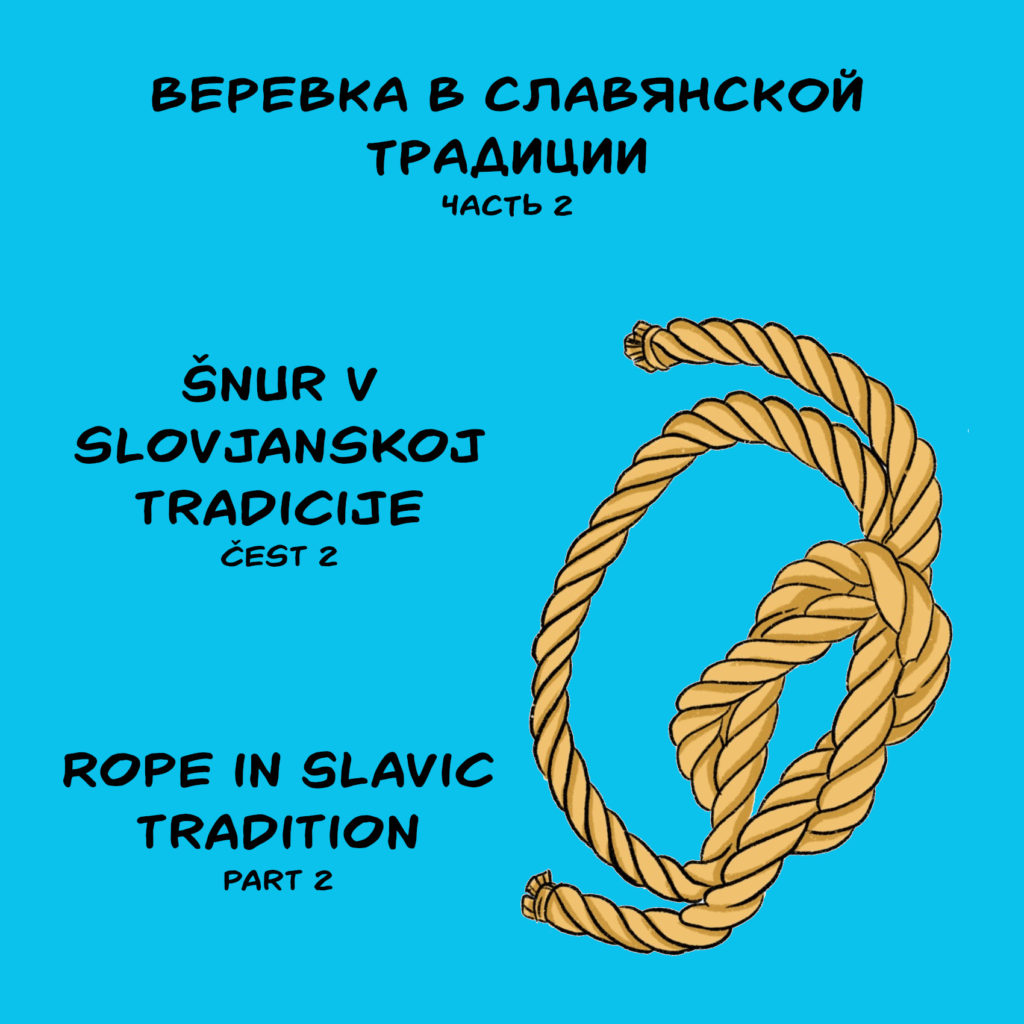
Rope in Slavic tradition – part 1
A common rope used today, was also considered a talisman by the ancient Slavs. It protected from curses and even helped to neutralize evil spirits.
ꏍ
Before the wedding, the North Russian Slavs tied a rope (a belt or a fishing net) over the naked body of the bride and groom to protect them from evil spells. For the same purpose, the Serbs surrounded the bed of a woman in labor and a child with a rope. Slavs would also put a red rope or a ribbon on a hand of a child or a pregnant woman, as well as just a beautiful girl, to protect them from being cursed. In general, using rope as a belt, was one of the ways to create a magic circle, which ensured the inviolability and safety of the person in it.
ꏍ
Macedonians believed that a person could tie a vampire by throwing a noose around his neck with a reed rope. The Poles believed that a rope woven from nine bast strips was suitable for capturing Vodyanoi. They also were ready to chase away Mara, who came at night to strangle people, by beating her with a rope or a belt.
ꏍ
To be continued…
ꏍ